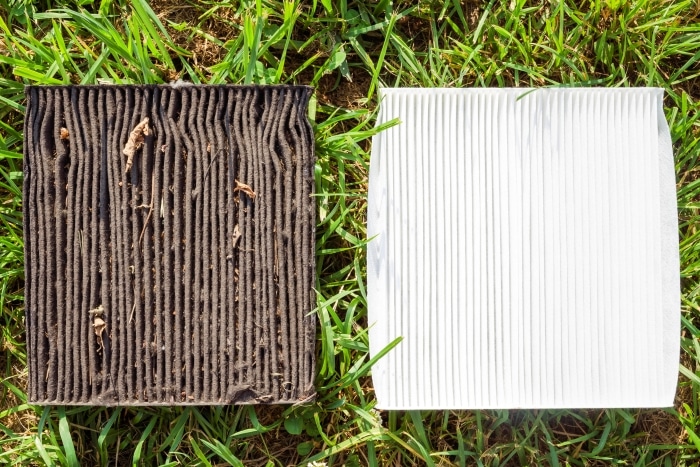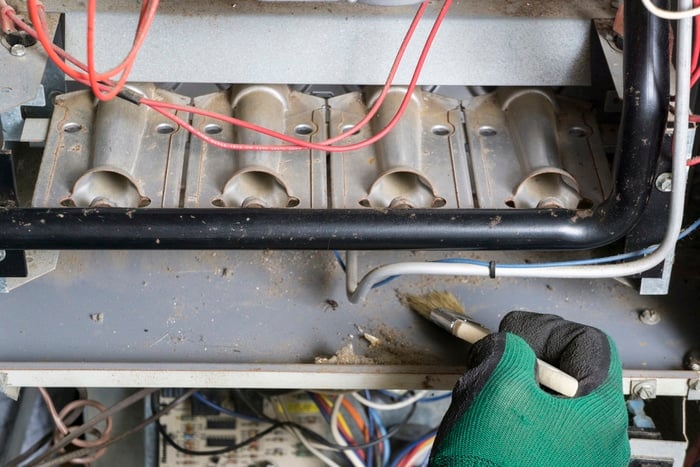Are you wondering about the safety of your furnace?
Although furnaces are typically considered safe, ignoring faulty components and failing to maintain them regularly can lead to high CO levels.
Don’t worry, though. In this article, you’ll learn how to prevent the issue.
High CO levels in furnaces can pose serious health risks, including symptoms like headaches, confusion, nausea, sleepiness, and, in extreme cases, death. Luckily, you can easily prevent high CO levels by ensuring your furnace is properly vented, replacing the air filter, and inspecting the burners and heat exchanger.
Read on to learn more about the dangers of high CO levels in furnaces!
What Are the Dangers of High CO Levels in Your Furnace?
Before delving into strategies for preventing high CO levels in your furnace, it’s important to understand the dangers of this substance.
In this section, I’ll explain what carbon monoxide is, what can happen if you inhale it, and what you should do in case of high levels of CO.
Are you ready? Let’s get started!
What Is Carbon Monoxide?
Carbon monoxide, also known as CO, is an odorless and colorless gas formed by the incomplete combustion of fuels, such as gas, oil, wood, or charcoal. Furnaces typically use these types of fuels to produce heat and keep your home warm.
Under normal circumstances, your furnace shouldn’t release high CO levels. However, if the combustion is incomplete because there’s not enough oxygen for the burning process or due to a malfunction with one of the internal components, you’re in danger of inhaling carbon monoxide.
What Happens if You Inhale CO?
Exposure to high CO levels is very dangerous, as according to the American Lung Association, CO can reduce the blood’s ability to carry oxygen.
Mild and moderate exposure to CO can lead to different symptoms, including headaches, nausea, dizziness, confusion, sleepiness, and weakness. Severe exposure can result in impaired vision, loss of consciousness, and, in extreme cases, death.

Everyone is at risk of carbon monoxide poisoning. Unfortunately, every year, over 400 Americans lose their lives due to this gas. Also, the CDC warns that people can die from CO poisoning while asleep, often without showing symptoms beforehand.
I know that the thought of CO poisoning can be very concerning, but don’t worry! It can be easily prevented. Regularly maintaining your furnace and other appliances can ensure their safe operation and keep you and your family safe.
What to Do in Case of High Levels of CO
If there’s soot buildup or your furnace has a yellow or flickering flame, it could indicate incomplete combustion and CO production.
In such cases, I recommend ventilating the area and leaving your home immediately. Don’t spend any more time indoors.
It’s also crucial to call the fire department. Follow their instructions and wait for assistance outside. Please do not enter your home until it has been inspected.
If you feel sick or present any of the symptoms mentioned above (headaches, dizziness, nausea, sleepiness), please seek medical attention immediately.
It’s also important to call a licensed HVAC technician. They can determine the source of the carbon monoxide and safely fix the problem.
Preventing CO Emissions From Your Furnace: 5 Tips
As you’ve probably noticed, it’s crucial to treat carbon monoxide exposure seriously and take preventive measures to protect both yourself and your family.
In this section, I’ll walk you through five methods to prevent CO emissions from your furnace.
Keep in mind that you’ll need to access your furnace’s internal components. So, having the manufacturer’s manual handy is essential.
#1 Replace the Air Filter
In my opinion, one of the easiest ways to prevent CO emissions from your furnace is by replacing the air filter.
The filter captures dust, dander, and other small particles that could affect air quality. However, if you haven’t replaced the filter in a while, it can restrict airflow and lead to incomplete combustion, one of the main causes of carbon monoxide production.

Don’t worry, though. Replacing your furnace’s air filter is very simple, just follow these simple instructions:
- Turn off your furnace and locate the air filter, which is typically near the fan or inside a duct opening. If you can’t find the filter, please click here or read the owner’s manual.
- Slide the filter out of its housing.
- If you have a reusable filter, please clean it using a brush or vacuum. You can also rinse it with water and let it air dry.
- If your filter hasn’t been replaced within the last couple of months or is very dirty or damaged, please replace it with a new one.
- Slide the filter back into its slot. Make sure the arrows on the filter frame point in the direction of airflow.
You should replace the filter every 1 to 3 months to ensure your furnace’s efficiency and prevent CO emissions.
#2 Ensure Proper Ventilation
To prevent carbon monoxide accumulation, ensure your furnace is properly vented.
You see, furnaces generate heat through a combustion process, in which a fuel source, typically gas or oil, combines with oxygen. If there’s a problem with the venting system, oxygen can’t flow into the furnace, leading to incomplete combustion. As a result, CO will begin to build up.
It’s crucial to check the intake vent, which allows fresh air from the outside to enter the furnace for combustion. Look for any visible signs of damage and remove any obstructions. Clean the intake vent using a vacuum or a long, flexible brush.
It’s also important to examine the flue, which is responsible for venting harmful gases out of your home. Check the exterior cover for obstructions, like bird nests or debris. Don’t forget to use a flashlight to look for any signs of damage.
If you find any issues with your furnace’s venting system, I recommend contacting an HVAC technician. They have the expertise and tools needed to address the problem safely.
#3 Clean the Burners
You can also keep your furnace from emitting carbon monoxide by cleaning the burners regularly.
The burners play a crucial role in the combustion process since they’re responsible for mixing air with fuel and igniting them to generate heat. Over time, burners can get dirty and interfere with the fuel-air mixing process, leading to incomplete combustion and the emission of CO.

To prevent the dangers of high CO levels from your furnace, you should clean the burners. Here’s how to do it:
- Turn off your furnace and shut off the gas supply to ensure your safety.
- Remove the front panel and access the burners; they look like a series of metal tubes. If you can’t find the burners, please refer to the manufacturer’s manual.
- Use a flashlight and inspection mirror to see the front side of the burners. If they’re dirty, use an old toothbrush or air compressor to clean them.
- If you notice the burners are damaged, please get a replacement.
- Inspect the gas line for any obstructions in the holes. Use a soft brush to clean them.
- Put everything back together and turn on the gas and power. Then, test the furnace.
#4 Inspect the Heat Exchanger
To ensure your safety and prevent the dangers of high CO levels, my usual advice is to inspect the heat exchanger regularly.
The heat exchanger is a series of coils inside the furnace that heat the air blown into your home. Unfortunately, if the heat exchanger becomes damaged, combustion gases (including CO) can escape and mix with the clean air that’s supposed to be distributed.
Please turn off the power and gas supply to inspect the heat exchanger. Then, remove the access panel and look for any signs of damage using a flashlight and inspection mirror.
If the heat exchanger is cracked or damaged, you must stop using the furnace and call an HVAC technician.
#5 Install a CO Detector
I find that installing a CO detector is one of the most effective ways to prevent carbon monoxide poisoning.
CO is often called the “silent killer”, as it can’t be smelled or seen. Unfortunately, many of the appliances in your home, including your furnace, can emit this harmful gas. Therefore, installing a detector can help ensure the safety of your family.
A CO detector measures the concentration of carbon monoxide in the air and sounds an alarm if there’s an issue.
You can purchase CO detectors at most local hardware stores or websites like Amazon or Best Buy. Keep in mind that you’ll need to install a detector on every level of your home, inside and outside bedrooms, near stairs, and at least 10 feet away from your furnace.
Wrapping Up: Tips for a Safer Furnace
Hopefully, now you know all about the dangers of high CO levels in furnaces.
Remember that carbon monoxide is a colorless and odorless gas that can be harmful to your health. To keep your family safe, it’s important to regularly maintain your furnace by checking the air filter, burners, and heat exchanger. Don’t forget to ensure proper ventilation to prevent incomplete combustion and the buildup of dangerous CO levels.
Thank you so much for taking the time to read this article. If you’ve found it helpful, please check out our other related guides.
Good luck!









